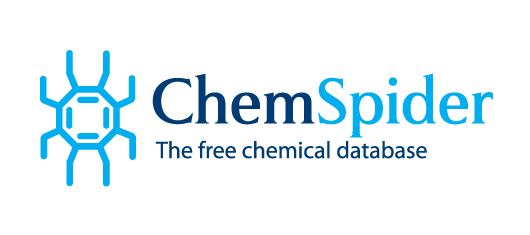Synthesis of azulene-substituted benzofurans and isocoumarins via intramolecular cyclization of 1-ethynylazulenes, and their structural and optical properties: The preparation of azulene-substituted benzofurans and isocoumarins was established by two types of intramolecular cyclization reaction of 1-ethynylazulenes. 2-(1-Azulenyl)- and 2,3-bis(1-azulenyl)benzofurans were prepared by the palladium-catalyzed cross-coupling reaction of 1-iodoazulenes with 2-ethynylphenol and that of 1-ethynylazulenes with 2-iodophenol under Sonogashira–Hagihara reaction conditions following the intramolecular nucleophilic addition of the oxygen nucleophile to the presumed 1-arylethynylazulenes. In contrast, 1-(phenylethynyl)azulenes bearing an o-methoxycarbonyl function on the substituted phenyl moiety exhibited intramolecular cyclization either in the presence of trifluoroacetic acid or N-iodosuccinimide (NIS) to afford azulene-substituted isocoumarins and 4-iodoisocoumarins.
Wednesday, 27 December 2017
Efficient synthesis of benzocyclotrimer analogues by Negishi cross-coupling and intramolecular nucleophilic substitution
Efficient synthesis of benzocyclotrimer analogues by Negishi cross-coupling and intramolecular nucleophilic substitution: We report a new and efficient synthetic strategy that allows access to flexible and functionalized benzocyclotrimers under mild conditions and in few steps. The Negishi cross-coupling reaction was used for the C–C bond formation, whereas intramolecular O-alkylations provided the oxepane rings.
Aromatic aldehyde-selective aldol addition with aldehyde-derived silyl enol ethers
Aromatic aldehyde-selective aldol addition with aldehyde-derived silyl enol ethers: The aldol reaction using aldehyde-derived silyl enolates as nucleophiles with aromatic aldehydes chemoselectively proceeded in the presence of silyl triflate and 2,2′-bipyridyl to produce β-siloxy aldehydes, while the aliphatic aldehydes were completely recovered. The unprecedented chemoselectivities depend on the reactivities of the pyridinium-type intermediates derived from the aromatic and aliphatic aldehydes.
Photoinduced Rearrangement of Dienones and Santonin Rerouted by Amines
Photoinduced Rearrangement of Dienones and Santonin Rerouted by Amines: The photoinduced rearrangement pathways of simple 2,5-dienones and the natural product santonin were found to be effectively rerouted by amines, giving rise to unprecedented products. Either cis olefins or cyclobutenes were obtained from 4,4-disubstituted 2,5-dienone upon irradiation (365 nm) in the presence of various amines depending on the solvent. Previously undescribed [4.4.0] and [5.3.0] fused-ring-containing products were obtained when santonin was irradiated (365 nm) in the presence of methylamine. The amines present in these reactions were incorporated into the products by means of amide-group formation.
List of Chemistry Databases
1. PubChem is an open chemistry database at the National Institutes of Health (NIH). It means that you can put your scientific data in PubChem and that others may use it or vice versa.
It collect information on chemical structures, identifiers, chemical and physical properties, biological activities, patents, health, safety, toxicity data, and many others.
2. ChemSpider is a free chemical structure database at the Royal Society of Chemistry. It is providing fast text and structure search access to over 60 million structures from hundreds of data sources including various details (physical, chemical properties and vendors). Latest updates found in their blog
3. Spectral Database for Organic Compounds (SDBS) is a free and integrated spectral database system for organic compounds, it includes 6 different types of spectra. The 6 spectra are as follows, an electron impact Mass spectrum (EI-MS), a Fourier transform infrared spectrum (FT-IR), a 1H nuclear magnetic resonance (NMR) spectrum, a 13C NMR spectrum, a laser Raman spectrum, and an electron spin resonance (ESR) spectrum.
4. Organic Syntheses, Inc., is a non-profit database provided the chemistry community with detailed, reliable, and carefully checked procedures for reproducibility of the organic compounds in the laboratory of a member of the Board of Editors.
5. SciFinder is the most comprehensive database (CAS) for the chemical literature, indexing journal articles and patent records with comprehensive experimental details (chemical substances and reactions). It consists various filters so that it can search by topic, author, and substances by name or CAS Registry Number, OR use the editor to draw chemical structures, substructures, similarity or reactions. Reaxys, Web of Science, Scopus and PubMed are complementary to SciFinder.
Preparation of Quaternary Centers via Nickel-Catalyzed Suzuki–Miyaura Cross-Coupling of Tertiary Sulfones
Preparation of Quaternary Centers via Nickel-Catalyzed Suzuki–Miyaura Cross-Coupling of Tertiary Sulfones:We describe the development of a nickel-catalyzed Suzuki–Miyaura cross-coupling of tertiary benzylic and allylic sulfones with arylboroxines. A variety of tertiary sulfones, which can easily be prepared via a deprotonation–alkylation route, were reacted to afford symmetric and unsymmetric quaternary products in good yields. We highlight the use of either BrettPhos or Doyle’s phosphines as effective ligands for these challenging desulfonative coupling reactions.
A New Portal to SuFEx Click Chemistry: a Stable Fluorosulfuryl Imidazolium Salt Emerging as an 'FSO2 ' Donor of Unprecedented Reactivity, Selectivity, and Scope Guo Angewandte Chemie International Edition Wiley Online Library
A New Portal to SuFEx Click Chemistry: a Stable Fluorosulfuryl Imidazolium Salt Emerging as an 'FSO2 ' Donor of Unprecedented Reactivity, Selectivity, and Scope: Sulfuryl fluoride, SO2F2, has been found to derivatize phenols of all kinds of environments, even those in highly polyfunctional molecules. We now report that solid reagent 3-1 delivers the same "F-SO2+" fragment to Nu-H acceptor groups in the substrates. However, triflate salt 3-1 is a far more reactive fluorosulfating agent than SO2F2 and displays selectivity preferences of its own. Moreover, the new azolium triflate reagent reacts once with primary amines and anilines, and stops.
Subscribe to:
Comments
(Atom)












